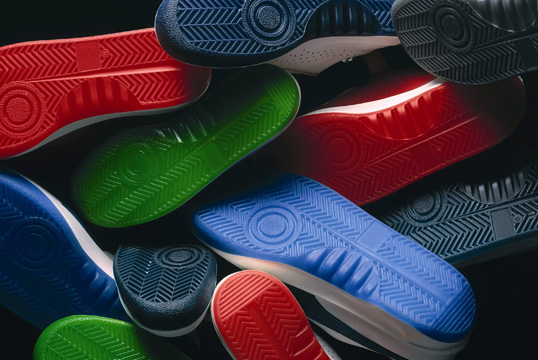Polyurethanes
PUR (or Polyurethane) is a resilient, flexible and durable manufactured material.

- History
- Properties
- Applications
- Processes
- Recycling
- Faq
History
Polyurethanes were invented back in the 1930s by Professor Dr. Otto Bayer (1902-1982). There are various types of polyurethanes, which look and feel very different from each other. They are used in a diversity of products, from coatings and adhesives to shoe soles, mattresses and foam insulation. However, the basic chemistry of each type is essentially the same.
Widespread use of polyurethanes was first seen during World War II, when they were utilised as a replacement for rubber, which at the time was expensive and hard to obtain. During the war, other applications were developed, largely involving coatings of different kinds, from aeroplane finishes to resistant clothing.
By the 1950s, polyurethanes were being used in adhesives, elastomers and rigid foams and, in the latter part of the same decade, flexible cushioning foams similar to those used today.
Subsequent decades saw many further developments and today we are surrounded by polyurethane applications in every aspect of our everyday lives. While polyurethane is a product that most people are not overly familiar with, as it is generally 'hidden' behind covers or surfaces made of other materials, it would be hard to imagine life without polyurethanes.
Properties
Not only are polyurethanes affordable and safe, they are also sustainable materials offering added comfort and protection to our everyday lives.
Polyurethane preserve the Earth’s natural resources by reducing the need for energy.
Polyurethanes make our lives more comfortable, from the relaxation provided by foams in furniture and bedding, to the insulation that regulates temperature inside buildings. In cars their cushioning properties help protect drivers and passengers in case of collision.
The material’s enormous adaptability and availability, not to mention affordability and recyclability, make it a material of choice for many manufacturers.
Applications
Common polyurethane applications include:
- Building insulation
- Refrigerators and freezers
- Furniture and bedding
- Footwear
- Automotive
- Coatings and adhesives
- Other applications
Processes
Polyurethanes are polymers made by reacting diisocyanates (MDI and/or TDI) with a range of polyols. Depending on the desired end product, chemical formulations may contain other ingredients such as catalysts, blowing agents and possibly flame retardants. These various combinations allow the manufacture of a range of product types including:
- rigid and flexible foams
- rigid and flexible integral skin foams
- elastomers
- adhesives
- coatings
- sealants
The density of the product is determined by the amount of blowing agent used, and the flexibility or rigidity by the type of polyols and diisocyanates involved.
Different forms of polyurethane are often combined with other materials to manufacture a variety of end products.
Recycling
Polyurethane is recycled in two primary ways: mechanical recycling, in which the material is reused in its polymer form, and chemical recycling that takes the material back into oligomers or monomers suitable for processing new polyurthanes. In addition, thanks to its adhesive properties polyurethanes can help recycling other materials such as rubber and wood.
